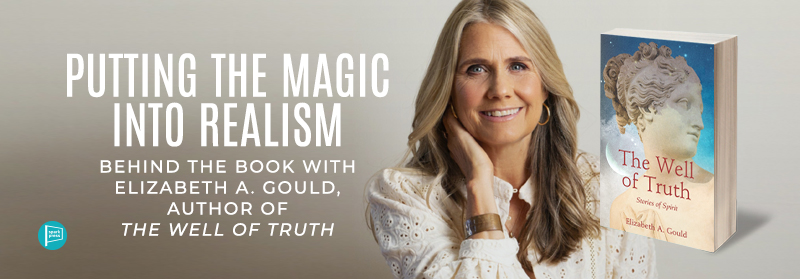
I’ve always enjoyed reading stories of faraway places where the line between reality and fantasy gets blurred through the mists of time. As a child, my imagination was ignited by myths and legends of the gods, goddesses, and heroes of ancient Egypt, Greece, and Rome. But it wasn’t until my parents took me to see the King Tut exhibit in Los Angeles in 1978 that I had the thrilling epiphany of seeing history and mythology brought to life before my eyes. This experience set me on a path of studying diverse cultures through a mythic lens and learning how goddess traditions and archetypes find expression in our modern world.
As a writer, I’m fascinated by the intersection of real-life and magical elements in a story. My book, The Well of Truth, is about a woman with mystical inclinations who receives guidance from feminine deities who help her navigate the trials and tribulations of everyday life. While there are many magical flourishes in the book, the stories are all firmly grounded in three-dimensional reality. (The book is written from a woman’s point of view because that is my experience. However, I believe that the wisdom of the feminine archetypes is available to everyone, regardless of race, creed, age, or gender identity.)
Having learned many lessons by writing a book in the magical realism genre, I hope these insights will stand you in good stead as you pursue your writing adventures.
- Find and inhabit the creative place in yourself where anything is possible. Holding an expanded state of awareness gives you access to the magician inside you. The quickest way I know to get there is by moving my body. Ten minutes of energetic dancing around my living room before sitting at my desk does the trick every time.
- Empty the logical mind so that you are receptive to the information that wants to come through you. You don’t have to understand what it means, but you must be open to receiving the messages. Take a walk outside- on the beach or in the forest without your phone. When you minimize distractions, it is much easier to tune into the quiet voice within.
- Learn how to court the Muse. If you want inspiration, you must prepare your environment to receive it. In my experience, coaxing a goddess to join me for a cup of tea means that I must create a space where She feels at home. Bear in mind that every goddess/archetypal energy has its own specific predilections. For instance, the Hindu deity Kali’s musical taste and snack preferences are much spicier and more ferocious than those of cool Artemis, the goddess of the silvery moon.
- Word counts, outlines, and deadlines are anathema to the Muse’s sensibilities. Sensual stimuli, such as fragrance, sound, and texture, are much more attractive to her. When I write, I often light a candle, anoint my skin with essential oil, prepare a delicious hot drink, and wrap myself in a velvet writing shawl.
- Be prepared for anything to happen. Don’t self-edit. In the world of magical realism, your job is to set the stage up by anchoring the three-dimensional details of the story. Once you establish that, you can sit back and let the energy show you where it wants to go.
- The patterns and rhythms of the natural world are your teachers. Get curious about how your thought process/writing style changes during the depths of winter or in the light and warmth of high summer. Do certain soul qualities get magnified by the changing colors of Autumn or the blooming Magnolias of Spring?
- Observe and synchronize your rhythms with the moon’s waxing and waning phases. By aligning yourself with the energies of the lunar cycle, you can allow it to inform your artistic expression. I’ve discovered that the new moon is a good time for incubating and developing ideas. As the moon waxes and grows, so do the details of my storyline. In the light of the full moon, I can better see the arc of the storyline. The waning moon is an excellent time for pruning and editing. Following a story through a complete moon cycle helps me understand what motivates my characters. Sometimes, I must go through several moon cycles to see patterns emerge.
Writing magical realism stories is an exhilarating and rewarding endeavor. Sometimes when I look out at our noisy, chaotic world, I wonder how things could be different if fossicking for magic was an accepted part of our culture. What would our society be like if we befriended and honored sacred female energies inside us? What if we valued traditionally feminine ideals such as connection over consumption, collaboration over competition, heart over mind? How would we treat the earth if we recognized her as a living, breathing entity?
From my perspective, I’ve noticed that when I welcome and integrate sacred feminine archetypes into my life and work, my writing voice is more precise and robust. As writers, we have the power to inspire others, and through our craft, we can reimagine possibilities and breathe magic into a weary world.

Leave A Comment